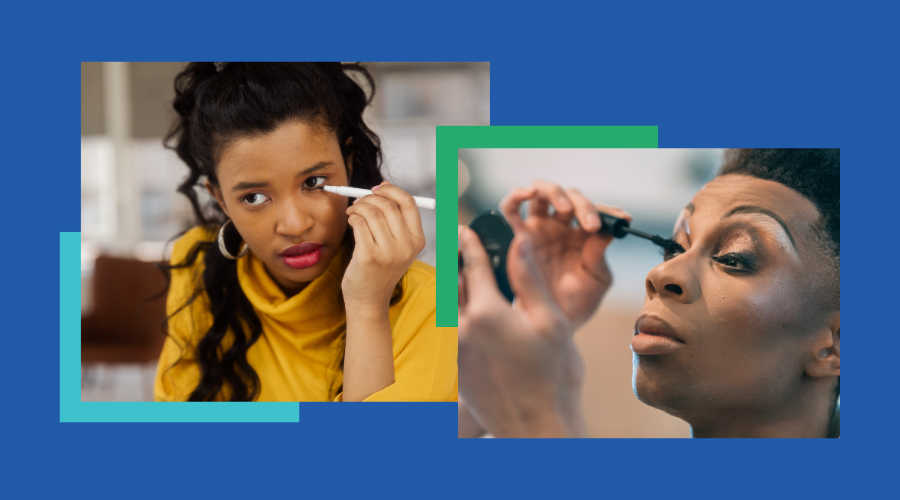
Some types of makeup frequently used in the United States and other parts of the world contain toxic chemicals, such as lead, phthalates, mercury, and formaldehyde. These chemicals are known to be connected to personal health harms, such as neurological issues, reproductive system damage, and cancer.
Because many people are unaware of the risks, the Haz Waste Program is partnering with local beauty influencers to help educate and inspire their social media followers and King County residents to learn more about their cosmetics, and, if necessary, choose safer alternatives.
Skin Deep database
Curious about whether the cosmetics you are using are safe? Check out the Skin Deep database, a search tool created by the Environmental Working Group (EWG) to see if the specific cosmetics you are using contain harmful ingredients and search for safer alternatives.
Safer cosmetics in Washington
In the future, Washington state residents will have greater protection from hazardous materials in cosmetics. In May 2023, the governor signed House Bill 1047, which bans the sale and distribution of cosmetics and personal care products that contain toxic materials linked to harmful impacts on health. The ban will begin in January 2025, with in-state retailers having until January 2026 to sell their existing stock of products.
Get more information about the Toxic-Free Cosmetics Act and sign up to attend a webinar this summer to learn about efforts to make cosmetic products safer for consumers and the environment on the Department of Ecology's website.
As background, here are the chemicals that will be banned from cosmetics in HB 1047:
Ortho-phthalates
Sometimes found in: Fragrances
Potential health impacts: Damage to reproductive system and development
Perfluoroalkyl and polyfluoroalkyl substances (PFAS)
Sometimes found in: Lotions, cleansers, nail polish, shaving cream, foundation, lipstick, eyeliner, eyeshadow, mascara
Potential health impacts: Effects on metabolism, pregnancy, children’s cognition and neurological development, and the immune system
Formaldehyde, methylene glycol, and chemicals that release formaldehyde
Sometimes found in: Nail paints, hair smoothing/straightening products
Potential health impacts: Dizziness, drowsiness, dry/cracked skin
Mercury and mercury compounds
Sometimes found in: Skin creams, beauty and antiseptic soaps, lotions
Potential health impacts: Neurological effects, including irritability, tremors, changes in vision or hearing, memory problems, depression, numbness and tingling in extremities
Triclosan
Sometimes found in: Soaps, skin cleansers, deodorants, lotions, creams, toothpastes
Potential health impacts: Hormonal effects, antibiotic resistance, carcinogenic effects on skin
m-phenylenediamine, o-phenylenediamine, and their salts (PPD)
Sometimes found in: Hair dyes
Potential health impacts: Skin sensitivity, respiratory issues, carcinogenic effects
Note – This is not a complete list of toxic chemicals found in cosmetic products. Other toxic chemicals, such as lead, are already regulated by other state and federal laws. Learn more about chemicals in cosmetics and find safer alternatives at EWG’s Skin Deep database.